Silence in the the City; Looking for Quiet Places in Hectic Hong Kong
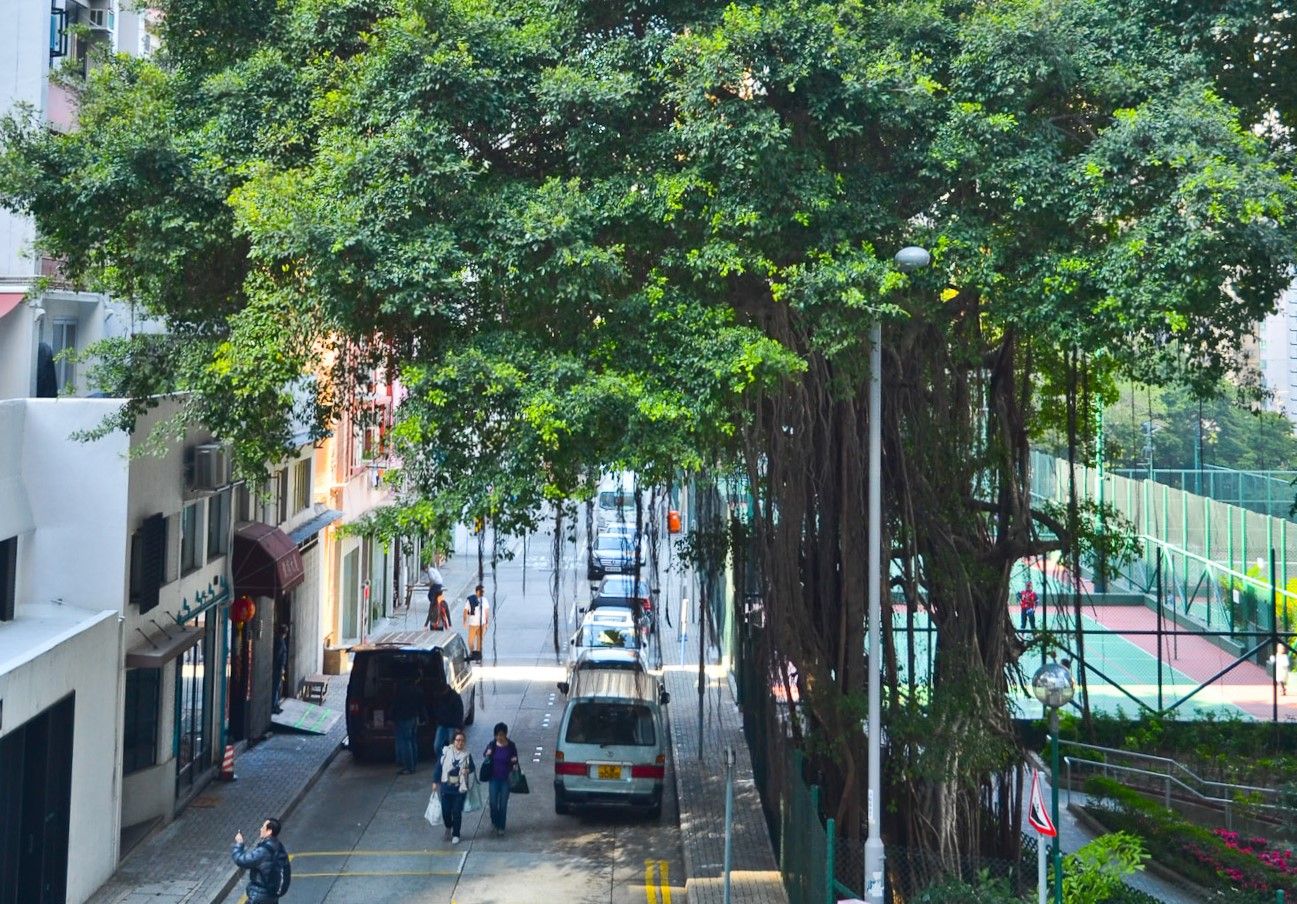
Hong Kong is boisterous, blunt, proud and loud. Sometimes too loud. The urban noise is constant, the jackhammers, the drilling, the car horns, the shouting... it never stops. Hong Kong is always on, 24/7. Victoria and her sister Michelle wanted an escape from the noise and chaos of the always busy streets and went hunting for spaces of silence. They ventured to the cobblestoned streets of Tai Ping Shan, a quiet picturesque pocket of the bustling Sheung Wan neighbourhood where ‘ghosts’ have kept it ‘off-the-beaten-track’ for decades. They created a little walking trail navigating to some places of calm in Hong Kong's urban jungle.
11am . Hollywood Road Park . 荷里活道公園 . Possession Street
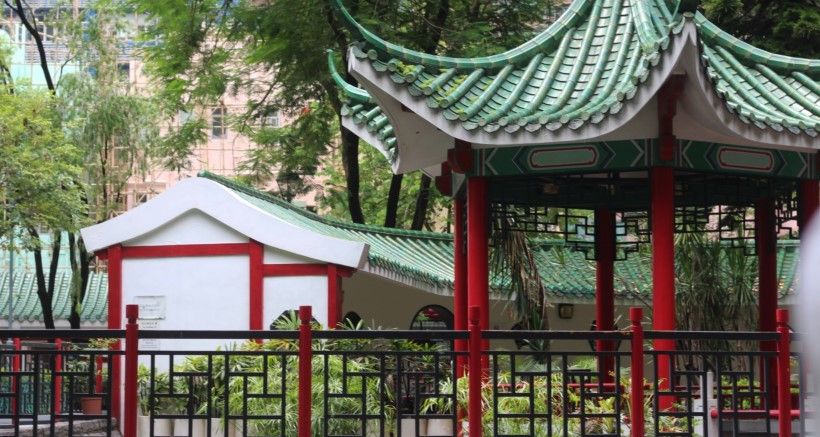
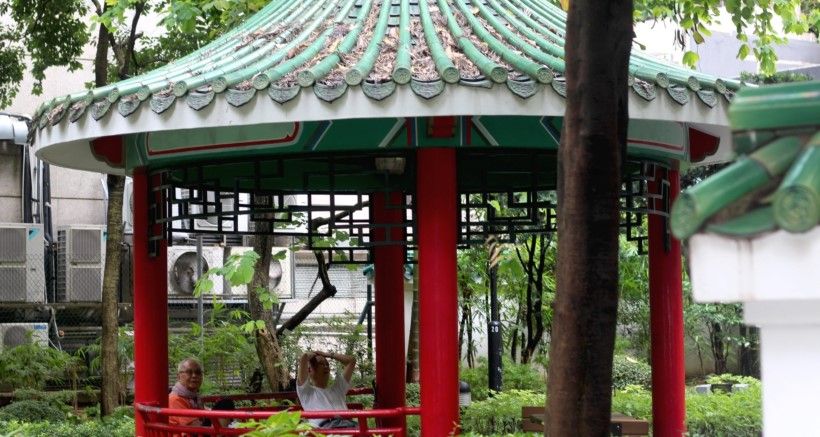
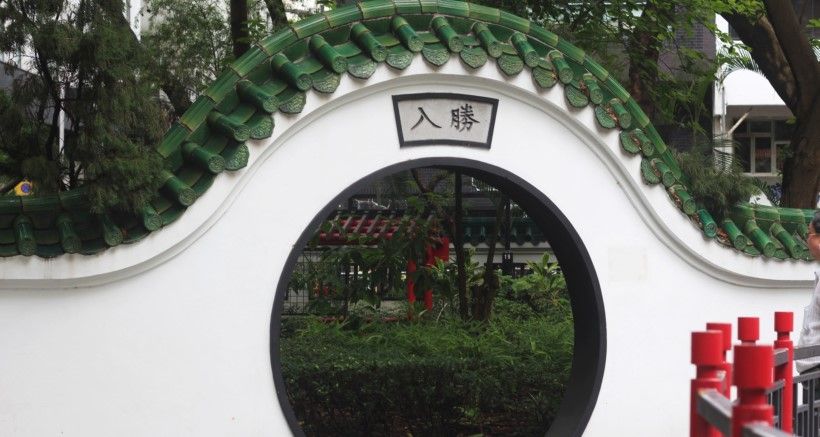
It was mid-morning, with only a few elderly people and young children scattered about. Chinese elements all around – ponds with koi fish and tortoises, moon gates, pavilions, bamboo and big banyan trees – give the park a tranquil, soothing atmosphere. The occasional shriek and squeal from five-year-olds running by didn’t break the contemplative atmosphere. It rather was a quieter reminiscence of the park’s much louder history. This place was once known as Tai Tat Tei, this was popular night market with food stalls, mahjong tables, and fortune tellers. The place to go for a bit of fun in the city. That was until 1980’s when the market was shut down and landscaped into this park.
Red pillared and green tiled pavilions make it a picture-perfect place for quiet contemplation.
Now it’s difficult to imagine the rowdy pouty place this once was. In the shade of the traditional red-pillared and greentiled pavilions, we found the perfect place for a quiet ‘stay and rest’ (the Chinese word for pavilion, 亭, comes from the saying ‘停留休息’). Surrounded by traditional Chinese pagodas with skyscrapers looming in the background. The juxtaposition of old against new is a beautiful testament to the history and culture amidst the hustle and bustle of Hong Kong’s streets.
12pm . Pak Shing Temple . 百姓廟 . Tai Ping Shan Street

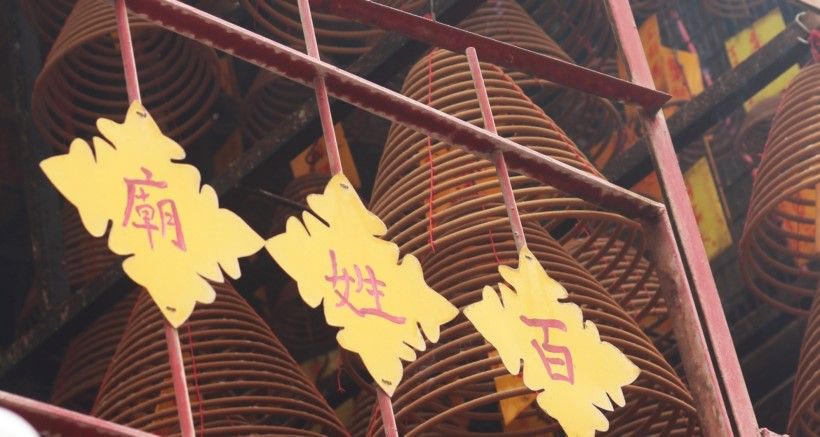
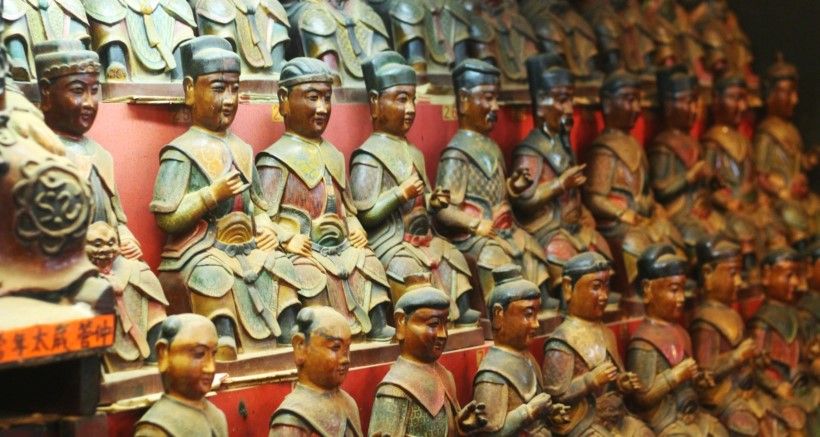
Our next port of call was Pak Sing Temple on Tai Ping Shan Street. It looked small as if it just had been squeezed into the last remaining empty spot on the street, but we soon discovered it is a huge complex with a fascinating history. Also known as the '100 names temple', Pak Sing temple was built in the 19th century for Kshitigarbha Buddha; King of the Dead. And it really was a temple of the dead. In the years of the plague, it became the home for spirit tablets of poor Chinese immigrants who died in Hong Kong, but couldn’t afford to have a proper burial. It sadly also became a place of refuge for elderly, sick, homeless and people who came here to die. Old records form of the nearby Tung Wah Hospital describe the temple as: "the dead and the dying huddled together in indiscriminately small filthy rooms".
The giant incense coils hanging en masse at the temple’s entrance set the tone. With no noise to be heard from Tai Ping Shan Street, the smell of incense in the air, the grand red and gold colours of the ancestral hall untouched by sunlight, it is hard to imagine the chaos and the disorder of death that once ruled here. At Hollywood Road Park, the silence was content, lazy, but here at Pak Sing Temple, the atmosphere was contemplative and more thoughtful with a sense of gravity.
1pm . Cat Street . 摩羅上街 . Upper Lascar Row
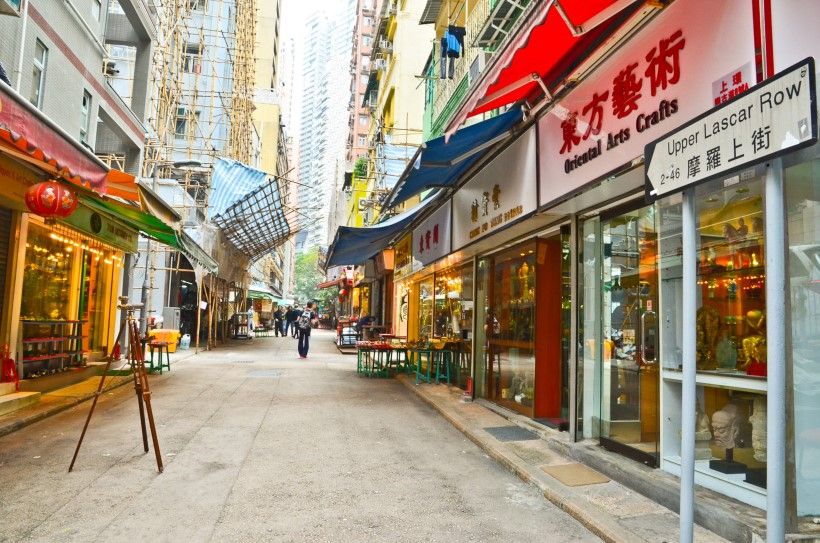
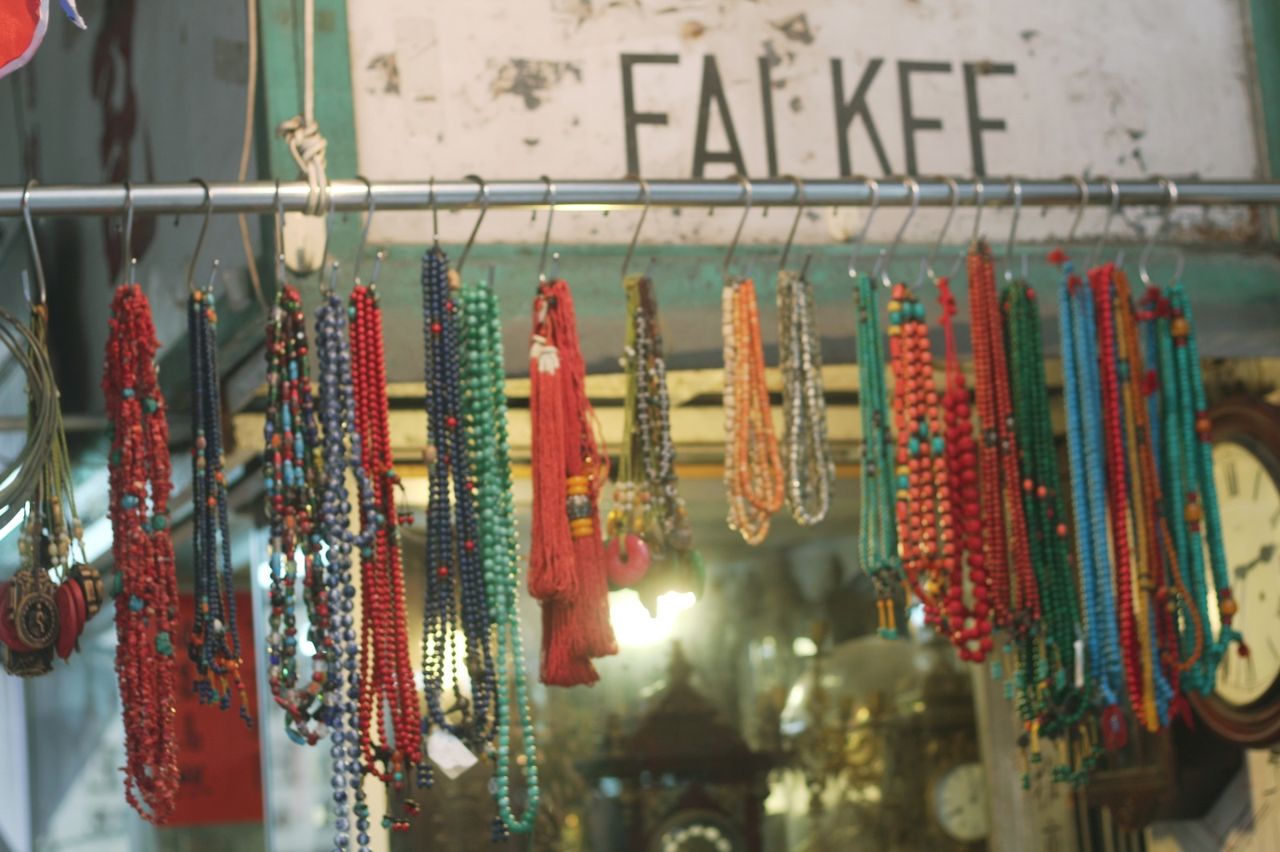
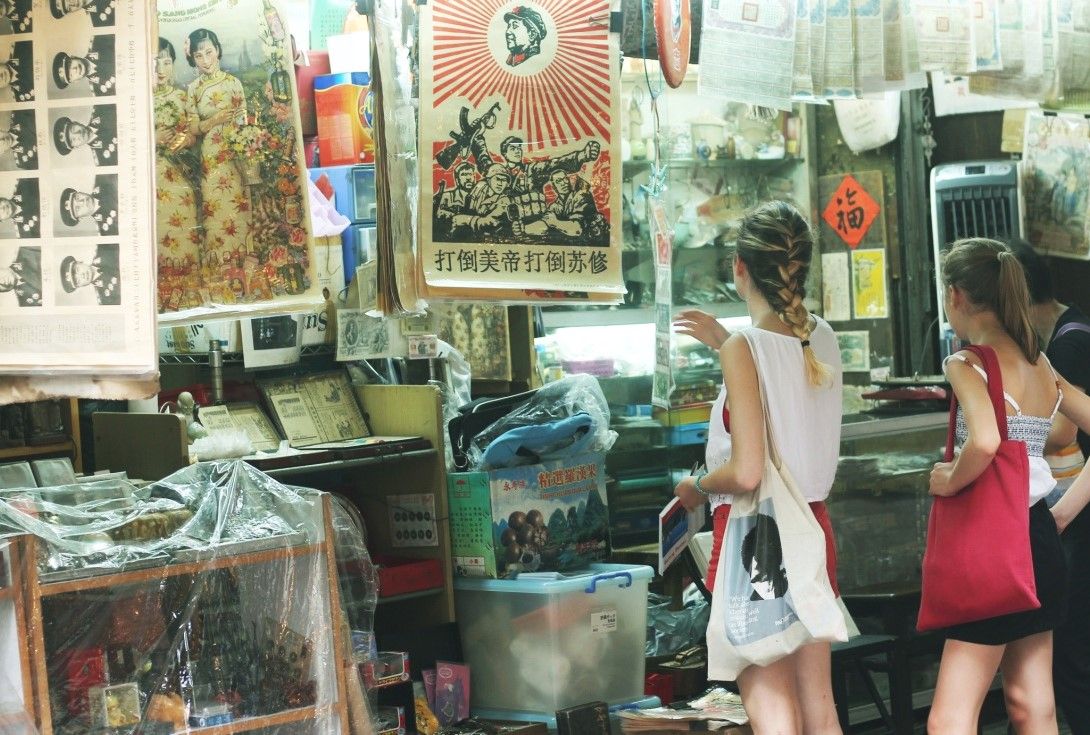
After the sombre and retrospective silence at Pak Sing Temple, we wound our way to the cheerfully captivating Upper Lascar Row 摩羅上街, also known as Cat Street. It’s always been and still is a ‘flea market’. Those who bought stolen goods from thieves (rats) were known as cats in Cantonese, hence the name. Cat Street is a trinkets lover’s treasure trove: anything from porcelain bowls to Chinese paintings, Mao memorabilia, Bruce Lee posters and jade jewellery. We were fortunate – because it was forecast to rain, it was almost completely silent on the otherwise busy market street and it was quite relaxing to look at what was on offer without being jostled in a crowd or hassled by shopkeepers.
1.30pm . Man Mo Temple . 文武廟 . 126 Hollywood Road
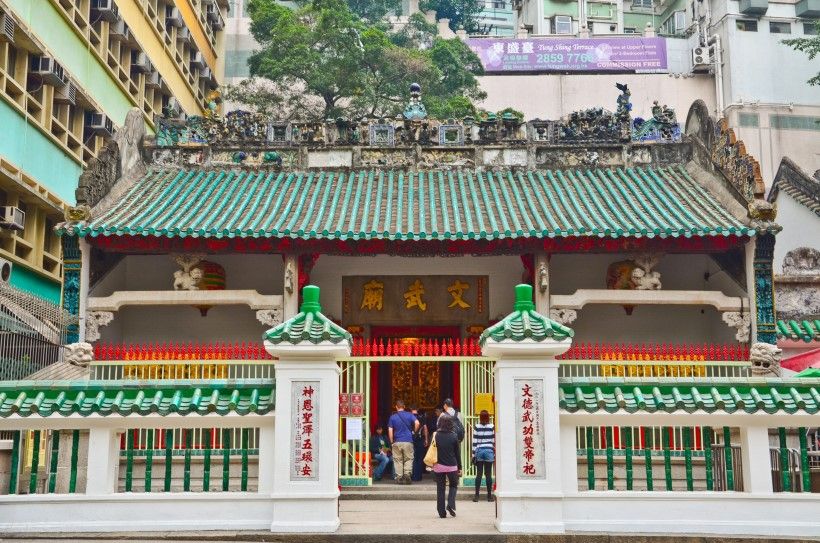
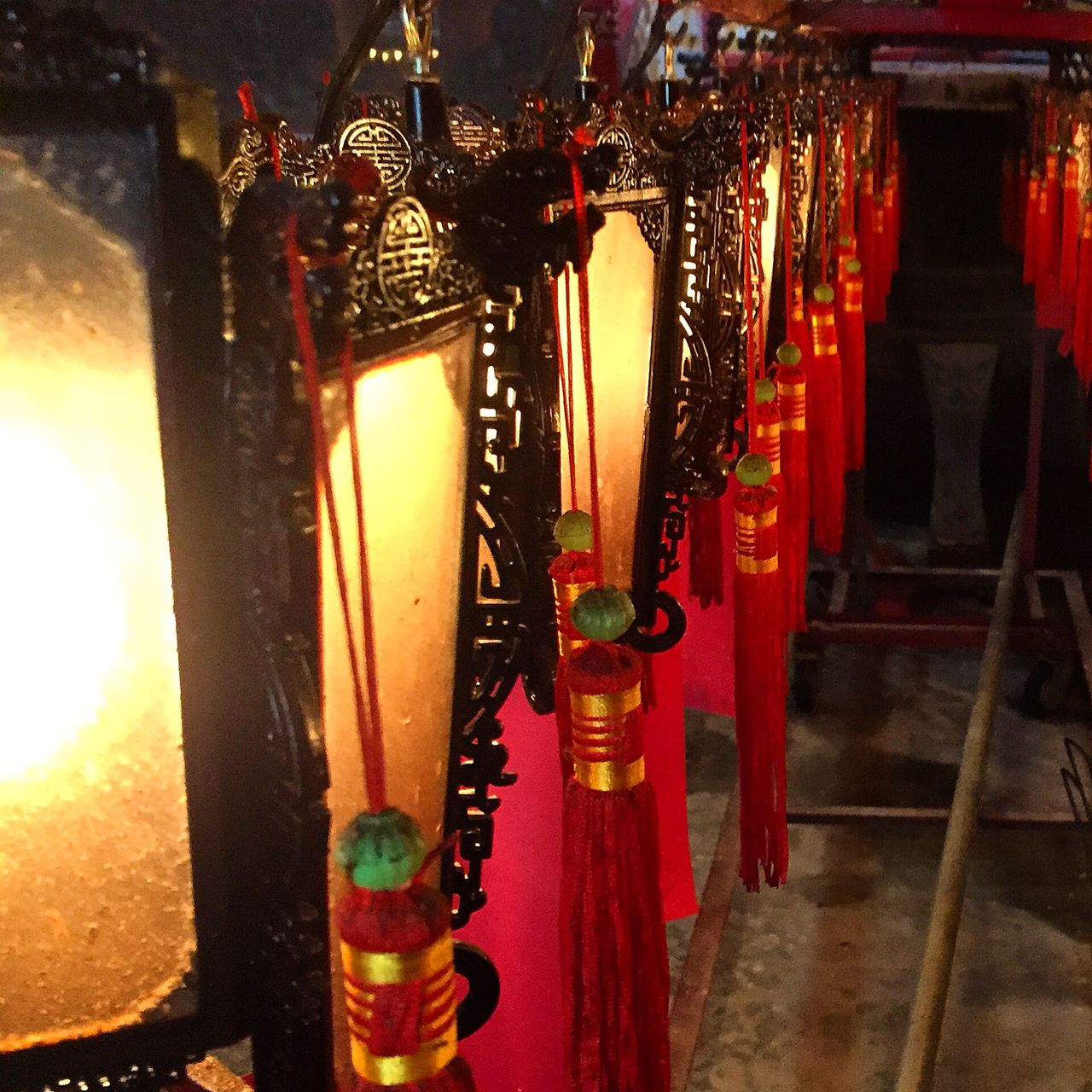
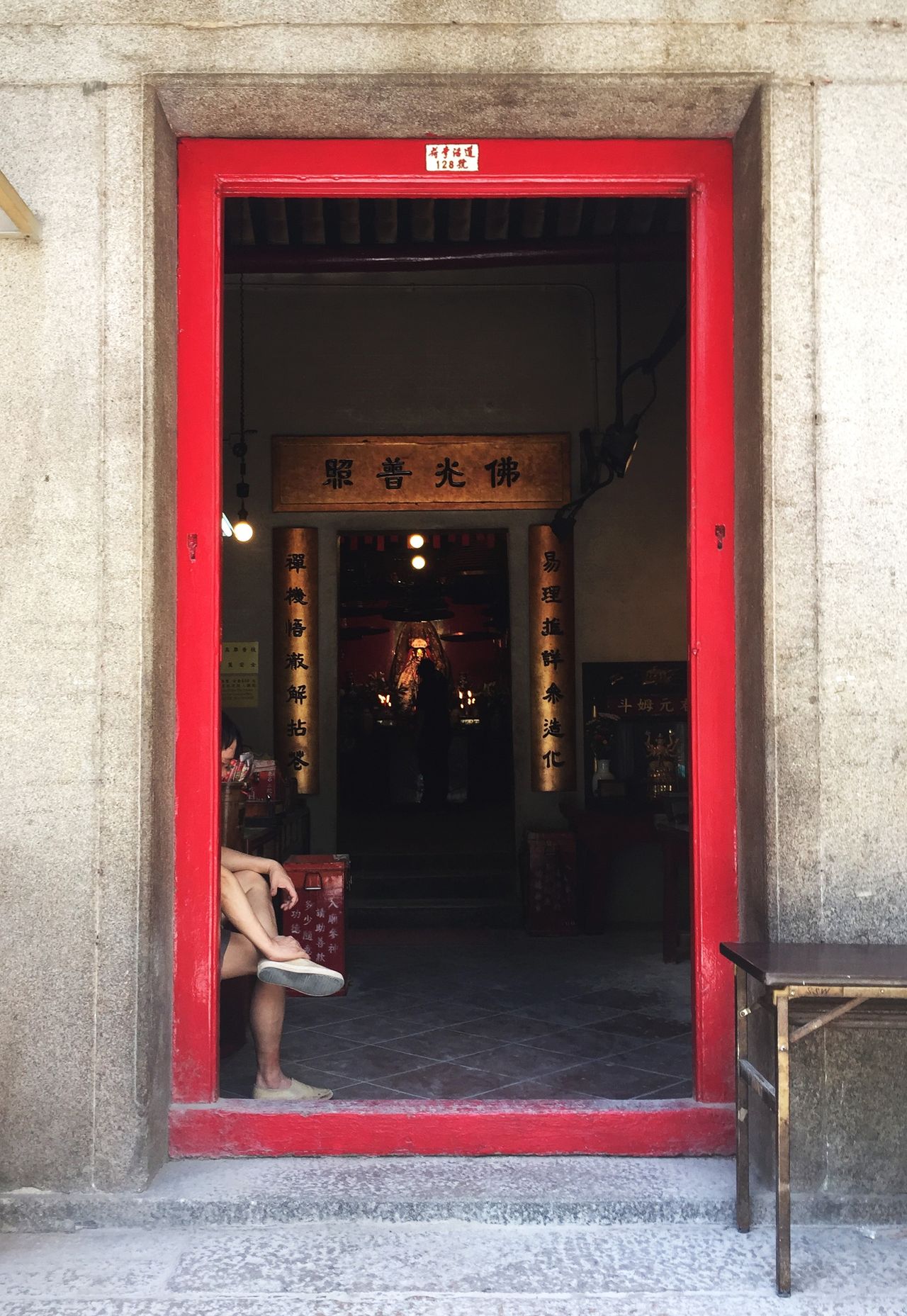
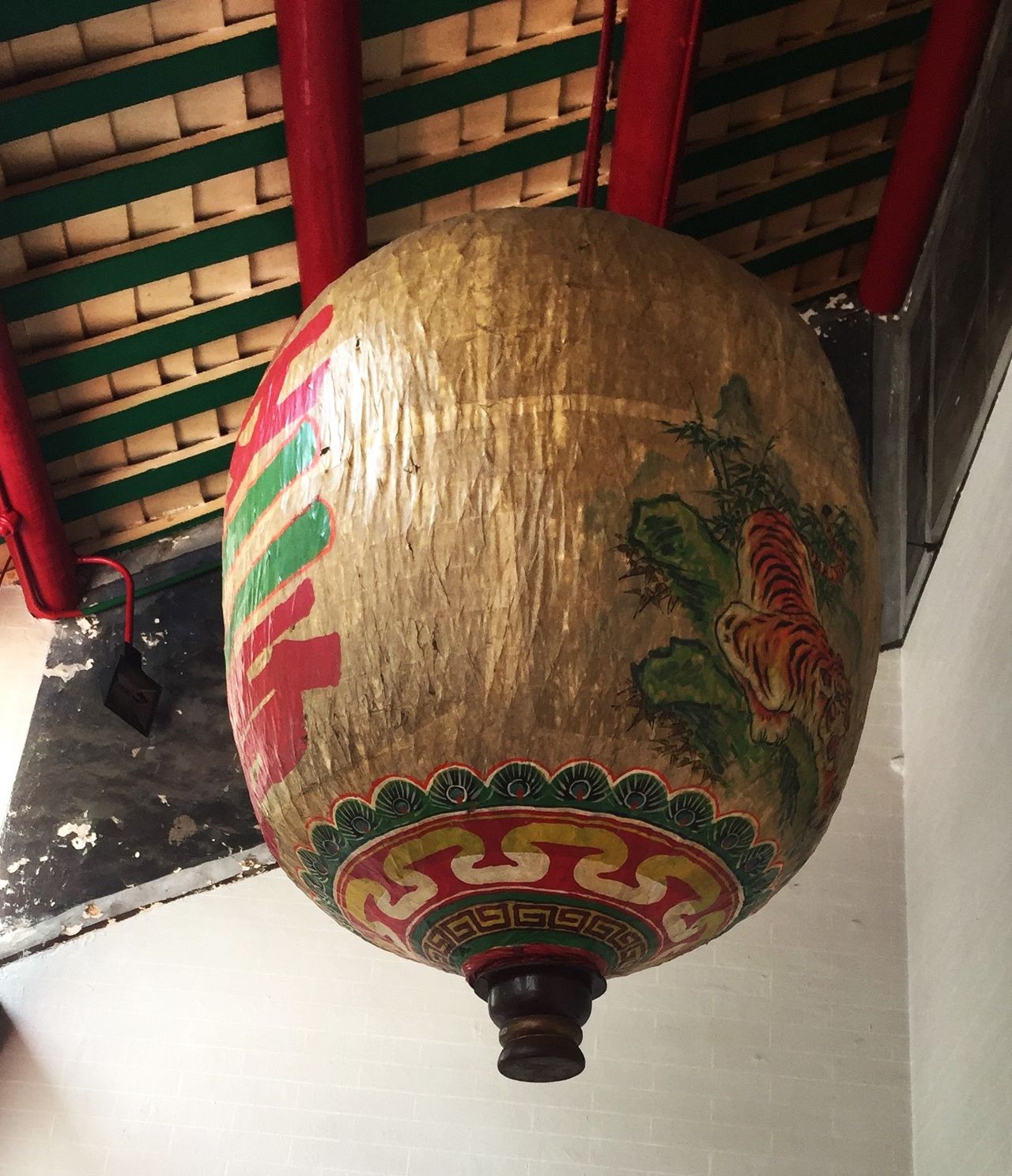
Round the corner, up the stairs, and over the road is Man Mo Temple 文武廟. Man means ‘civil’ and Mo ‘military’. Surprisingly, Man Mo Temple is dedicated to two very different gods. Man Cheong is the God of literature while Mo refers to Kwan Yu, the God of war. The images of the two gods are enshrined inside the temple: you’ll see Man Cheong dressed in a red robe, holding a writing brush in his hand and Kwan Yu dressed in green, toting a long warrior sword. This was where scholars would come to pray for sitting exams or community leaders to solve disputes. It still is one of Hong Kong’s oldest (1847), most popular and photogenic temples. At Chinese New Year it gets especially crowded with parents bringing their children to worship Man for some heavenly assistance in their school exams.
Like Pak Sing Temple, the heavy red and gold colours and abundant carvings inside the temple added to the mood of contemplation and meditation, though here, everything looked far more elaborate and resplendent. It was easy to picture scholars ardently praying here before taking their civil examinations. Going deeper and deeper into the temple, the silence became thicker and the smell of incense stronger. What struck me most about this temple was that there were plenty of people here praying, despite it being noon on a weekday.
2.30pm . Blake Garden . 卜公花園 . Po Hing Fong
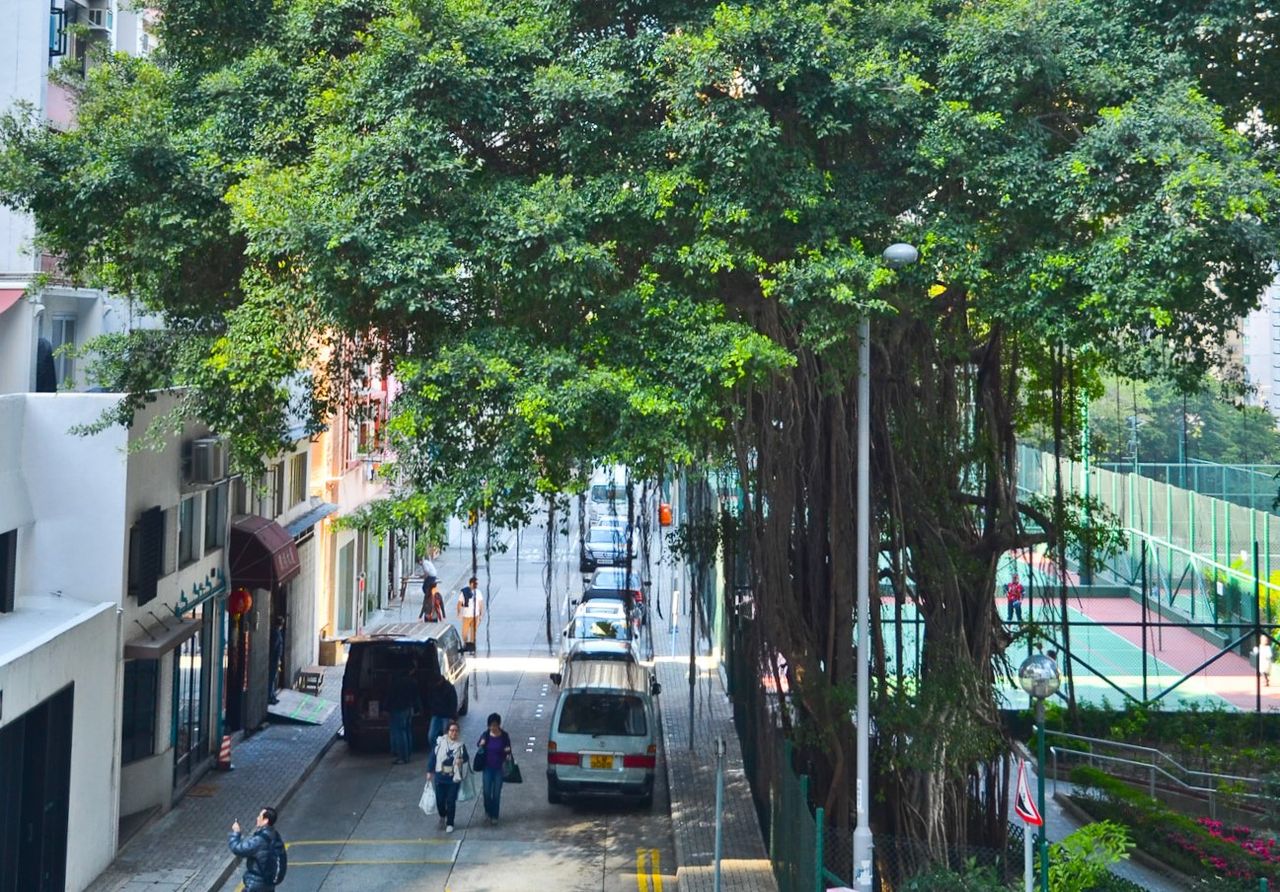
My last port of call was Blake Garden卜公花園. Walking up Square Street to get here, I passed by graffiti depicting a human face in grey scale, but his eyes were replaced by Hong Kong’s skyline. I think that’s the type of view most people have of Hong Kong - all they see is the skyline, but there is so much more to this wonderful city.
Blake Garden was a real find. A lovely place to sit under the shadow of two huge banyan trees. But little did I know about the dramatic history of the place. The area of Tai Ping Shan was devastated by the bubonic plague that spread here at the end of the 19th century, it was overcrowded and dirty. So in 1905 Governor Blake decided to demolish and redeveloped as Blake Garden making it the first public garden in Hong Kong. What I loved most about this park were the banyan trees. If had not been raining, and a guard had not been roaming about, I would have tried to climb them.
If it had not been raining and a guard had not been roaming around, I would tried to climb the banyan tree.
Only a short walk away from Hollywood Road Park, and yet the silence here felt completely different. Maybe it was because of my awareness of the tragic history of the land I was standing on, which seemed to be mirrored by the weather: it was raining heavily, in true Hong Kong typhoon season style.
Sitting down under one of the pavilions, watching the rain pour down, I had time to reflect on my day. Had I found silence? Yes, quite a few times, in different places and different forms.
Searching for quiet places in Hong Kong on a hot June day had taken me into a neighbourhood full of life, history, and authenticity. While I had started the day feeling that the silence would be an ‘escape’ from Hong Kong, I ended the day feeling like I had instead delved deeper into the city. And so, at 3pm on a rainy afternoon, I was ready to descend the steps back down to Hong Kong’s busy streets, more in love with the city than ever.
About Vicky
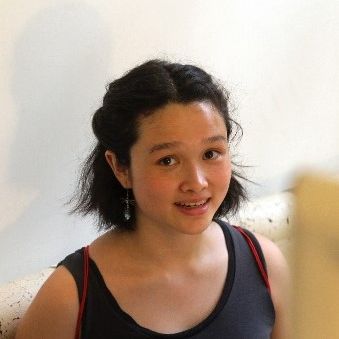
Victoria (Vicky) Firth, born to a British father and an Indonesian mother grew up in Hong Kong. As a typical ‘third culture kid’ she has a natural curiosity for the world around her. Currently a geography student at St Andrews in Scotland, Vicky loves the splendid and cultured environment of Edinburgh but is always happy to return home to Asia.
Photos by Vicky’s sister Michelle Firth.
Credits
Created by

Designed by

About
Pound Lane Concern Group 磅巷關注組
A group by CWD Planning and Conservation Kai-Fong Alliance to preserve, protect and restore the environment and heritage of Pound Lane and its neighborhouring areas. 中西區規劃及保育街坊聯盟 保育磅巷及鄰近地區的環境和文化遺產。
www.facebook.com/groups/poundlanecgMaoshan Connie 貓珊
Maoshan Connie is a map and children's book illustrator, passionate in exploring and documenting all the secrets and stories of this ever-changing city. She believes that maps should not just show roads, but also hidden alleys, footpaths and beautiful encounters that make up a city. Every handmade map is full of memories and love, created to share with other curious explorers. 畢業於英國劍橋大學主修兒童文學的貓小姐專門繪畫地圖及兒童繪本。她相信每張手繪地圖都該展現城市中的小故事、小人物、樹木及回憶等,而不單只是車路高樓。每張地圖都好像一本故事書般,是畫家跟其他好奇的探險朋友充滿愛的分享。
www.studiomaoo.com